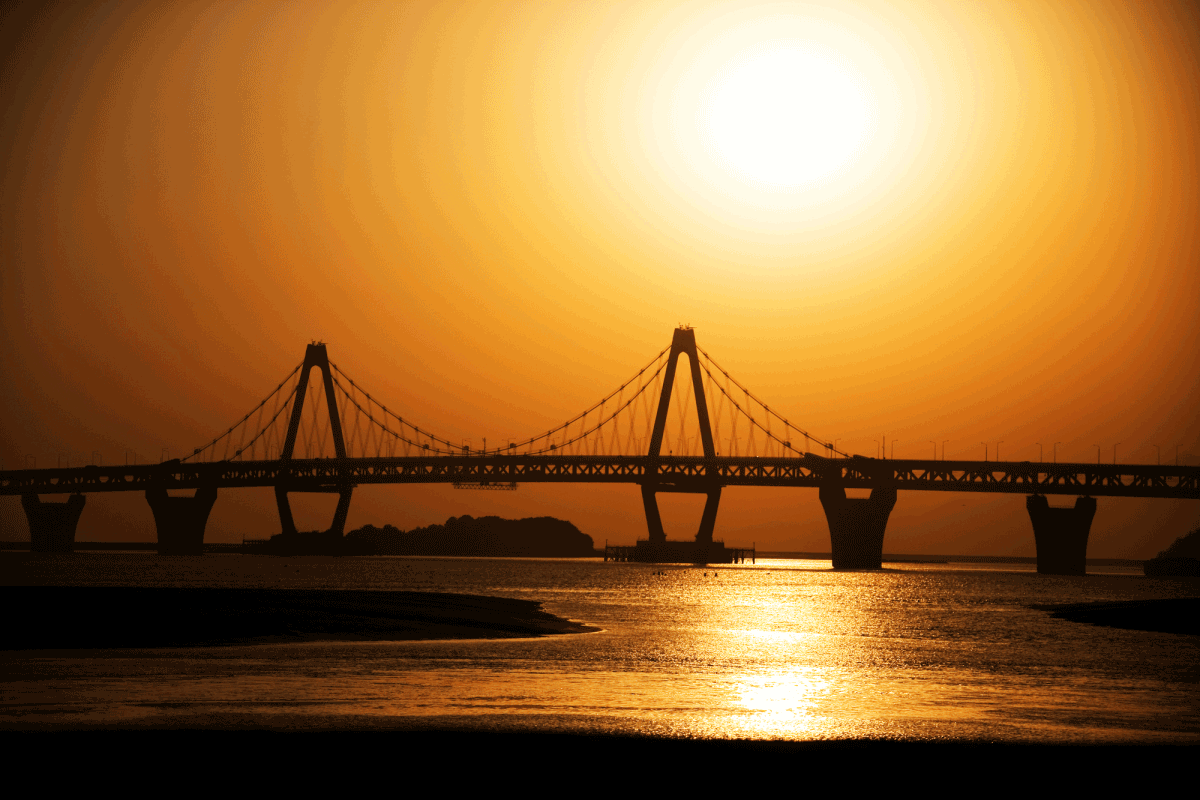
Spanning a length of 15,000 ft., the Yeongjong Bridge is an enormous self-anchored suspension bridge located in South Korea. It was built in Incheon and links the Korean mainland to the Yeongjong Island. It was completed in the year 2000 and is a part of the Incheon International Airport Expressway. The suspension bridge itself takes about 550 ft. out of its overall length which also features 7,400 ft. truss bridge and a 5,400 ft. steel box girder.
Perhaps the most fascinating fact about this bridge is that it is the world’s first 3-dimensional self-anchored suspension bridge. Aside being a substantially firm and highly functional structure, the Yeongjong Bridge is also an architectural beauty seeing as the cable and girder were shaped to imitate the eaves of a typical Korean roof tiled house. It was designed to withstand a great deal of atmospheric conditions including earthquakes and strong winds and is duly maintained to that effect. It is extremely important that bridges are monitored, and periodically evaluated to ensure that they remain firm, sturdy and safe. This helps to assure the safety of the public while ensuring the structural integrity of the bridge.
With a structure of its size, the Yeongjong Bridge, in particular requires constant maintenance and regular assessments. A common problem with structures like this is the formation of rust and corrosion due to exposure to all atmospheric conditions. Especial the caustic atmosphere of salt water. Salt water atmospheres are among the most detrimental to any substrate. Rust and Corrosion poses a deadly risk to the overall structure as it brings about a slow and progressive weakening of the bridge and eventual failure.
However, the Yeongjong Bridge is completely protected from this as a result of the application of the durable, high quality and long-lasting Rust Bullet Rust Inhibitors and Protective Coatings. The presence of this patented rust inhibitor has kept the bridge from deterioration and has provided a solid base that deflects and prevents the formation of rust or corrosion. When highly technical applications are concerned, it is important to use products that will provide results and Rust Bullet does just that as is evident with the Yeongjong Bridge. If it’s good enough to stop rust on the Yeongjong Bridge, Rust Bullet is good enough for you and all those many projects that require a rust inhibitor!
How will Rust Bullet Keep the Yeongjong Bridge Corrosion Free?
There are three recognized methods of protection that coatings provide. They are barrier protection, inhibition, and sacrificial action. Barrier Protection blocks moisture, oxygen and other chemicals from the substrate. All coatings are permeable to some degree, but barrier coatings have relatively low moisture permeability. Inhibitive coatings contain special pigments to inhibit or interfere with the corrosion reactions on the substrate. As moisture passes through the coating film, the anti-corrosive pigments slowly dissolve and aid in stopping corrosion. Sacrificial action is the method used by zinc- and aluminum rich coatings.
- Rust Bullet provides a barrier coating that is non-porous and impermeable.
- Rust Bullet contains special pigments that inhibit corrosion.
- Rust Bullet is sacrificial coating. This means it will “sacrifice” itself over time saving the integrity of the substrate to which it has been applied.
